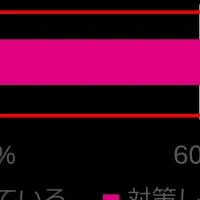
Korea University Researchers Uncover New Insights on WEE1's Role in Cancer Immunotherapy Resistance
Groundbreaking Discovery on WEE1 and Cancer Immunotherapy Resistance
Researchers at Korea University have made a significant breakthrough in understanding why some tumors resist immune checkpoint blockade (ICB) therapies, which are pivotal in modern cancer treatment. In a study published in the Cancer Immunology Research journal, the team has identified the protein kinase WEE1 as a critical factor in driving immune resistance in various tumor types.
What is Immune Checkpoint Blockade?
ICB therapies have transformed cancer treatment by enabling the immune system to recognize and attack tumor cells. These therapies utilize antibodies to block proteins that prevent immune responses against cancer, consequently allowing the immune system to destroy malignant cells. However, a substantial number of tumors have developed resistance to ICB, presenting a major challenge for oncologists and researchers alike.
The Role of WEE1
Traditionally recognized as a regulator of the cell cycle and a tumor suppressor, WEE1 plays a more complex role when it resides in the cytoplasm of cancer cells. Korea University's findings reveal that WEE1 promotes immune avoidance by enhancing AKT hyperactivation—a process indicative of tumor growth and progression.
Professor Tae Woo Kim, a leading researcher at Korea University College of Medicine, stated, “Our findings uncover a non-canonical oncogenic mechanism of cytoplasmic WEE1 and provide proof of principle that targeting WEE1 could be an appealing combinational strategy to overcome resistant tumors to ICB therapy.”
This research involved an analysis of RNA samples from patients with metastatic melanoma and non-small cell lung cancer undergoing ICB treatments. The differential expression of WEE1 was observed, with significantly elevated levels in patients who did not respond well to the therapy, correlating with unfavorable prognoses and markers associated with aggressive tumor characteristics.
Mechanistic Insights
The research delved into the mechanistic underpinnings of WEE1's activity in tumors. Notably, the transcription factor NANOG has been identified as a key regulator that upregulates WEE1 levels. “WEE1 is phosphorylated by AKT and then translocated to the cytoplasm where it influences the activity of HSP90A, which is crucial for AKT pathway hyperactivation,” explained Dr. Hyo-Jung Lee, the study's primary author.
This means the role of WEE1 switches from a tumor suppressor in the nucleus to an enhancer of tumor progression when in the cytoplasm, promoting immune evasion through a feedback loop that activates the HSP90A–TCL1A–AKT signaling axis.
Therapeutic Implications
Importantly, targeting WEE1 with existing inhibitors, specifically the drug adavosertib (AZD1775), has been shown to resensitize resistant tumors to ICB. Inhibiting WEE1 restores immune system activity against tumors that were able to evade detection previously.
Professor Kim expresses optimism, stating, “By inhibiting WEE1, we reinvigorate antitumor immunity, potentially transforming how resistant tumors are treated in the future.”
Conclusion
This study provides significant insights into the dual role of WEE1 and presents it as a promising target for enhancing the efficacy of existing cancer immunotherapies. As ongoing research continues to explore similar mechanisms in other cell cycle regulators, the potential for innovative treatment strategies becomes increasingly feasible for cancer patients facing difficult prognoses.
This pivotal research not only establishes WEE1 as a predictive biomarker but also opens up new avenues for combination therapies that may significantly improve outcomes for patients with immune-refractory tumors. The implications of these findings may extend far beyond WEE1, suggesting a broader horizon for understanding and combating cancer resistance in the future.
Topics Health)










【About Using Articles】
You can freely use the title and article content by linking to the page where the article is posted.
※ Images cannot be used.
【About Links】
Links are free to use.